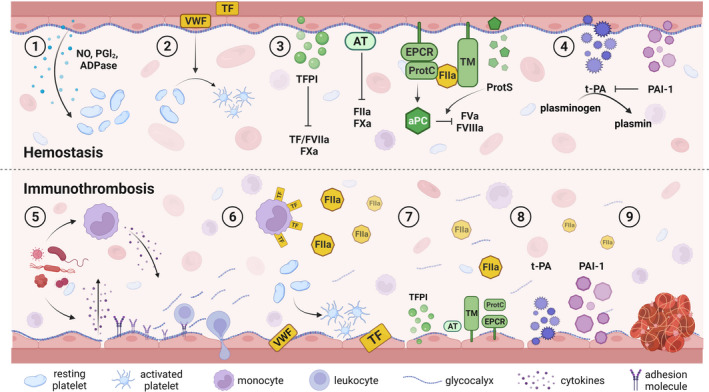FIGURE 1.

Endothelial contributions to hemostasis and immunothrombosis. ECs play a role in hemostasis via expression of (1) factors that prevent platelet aggregation, (2) procoagulant VWF, which recruits and activates platelets upon vessel injury, (3) several anticoagulant factors that limit thrombin formation and (4) pro‐ and antifibrinolytic factors that are important for thrombus resolution. (5) Pathogen exposure activates immune cells and ECs, which stimulates cytokine release that induce expression of adhesion molecules leading to leukocyte recruitment and extravasation, shedding of the glycocalyx, and vascular leakage. Cytokines also (6) upregulate tissue factor expression on immune cells and activation of ECs leading to thrombin generation, while at the same time causing (7) a decrease in production of anticoagulant factors and (8) a shift toward inhibition of fibrinolysis, thereby resulting in (9) thrombus formation containing the pathogen. ADPase, adenophosphatase; aPC, activated protein C; AT, antithrombin; ECs, endothelial cells; EPCR, endothelial protein C receptor; FIIa, activated factor II; FVa, activated factor V; FVIIa, activated factor VII; FVIIIa, activated factor VIII; FXa, activated factor X; NO, nitric oxide; PAI‐1, plasminogen activator inhibitor 1; PGI2, prostacyclin; TF, tissue factor; TFPI, tissue factor pathway inhibitor; VWF, von Willebrand factor
